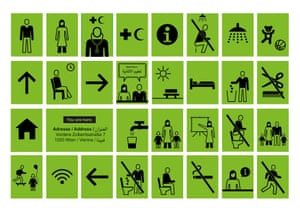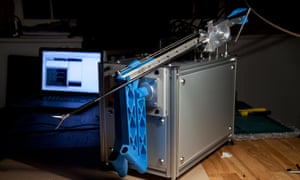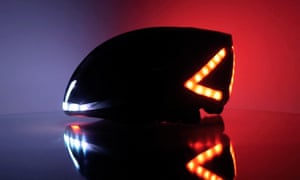
David Bowie’s final album cover, a build-your-own robotic surgeon and a coffee cup that allows astronauts to drink in space are among the Designs of the Year, a 70-strong lineup of ingenious innovations that will be exhibited at the Design Museum’s new home in Kensington from 24 November.
Launching the museum’s west London incarnation, housed in the concrete tent of the former Commonwealth Institute on the edge of Holland Park, the exhibition will join a new permanent collection, on show for the first time in the institution’s 27-year history – some of this year’s highlights might one day join the anglepoise lamp and the Eames plywood chair in the design canon.
But the exhibition does more than scout out the next design icons. Holding up a mirror to the creative industries, Designs of the Year is an annual barometer of the design world’s preoccupations, anxieties and dreams – as well as a reminder of its conscience, with a welcome emphasis on useful problem-solving, rather than luxury sofas.
Following a period of unprecedented global migration, responses to the refugee crisis loom large on the list this year. A simple icon-based communication systemdesigned to illustrate first aid kits and provide clear way-finding in refugee camps features alongside Ikea’s contribution to the crisis in the form of a flat-pack shelter, made from lightweight insulated panels that clip on to a simple frame. It’s a step up from the usual tents, though the design has yet to be perfected: the city of Zurich had to return 62 of the cabins it had ordered to house asylum seekers after tests showed the enclosures were “easily combustible”.

They could have done with the expertise of Design that Saves Lives, a structural assessment methodology created by Arup engineers that will also feature in the exhibition, developed in response to the collapse of the Rana Plaza textile factoryin Bangladesh in 2013, which killed 1,100 workers. Now adopted across the country, the assessment process has seen around 4,000 similar factories surveyed and upgraded to prevent such disasters in the future. Like many other projects on show, it is design as strategic process, rather than the creation of a final photogenic product.
Alongside humanitarian interventions, the shortlist also reflects the ongoing interest in open-source, DIY “maker” culture and crowdsourced design, as designers continue to bypass conventional routes to manufacture and consumers demand an increasing say in how their products are made.
Inspired by the publishing trends, three Royal College of Art graduates have developed an on-demand clothing company, Unmade, allowing people to order customised garments at the click of a button. Using digitally coded knitting machines and a simple online interface of adjustable graphic patterns, every item is made to order, yet sold at a similar price to mass-produced high street clothing.
Fellow RCA graduate Frank Kolkman has taken the DIY approach a few alarming steps further with a speculative project that imagines a future of robotic keyhole surgery in the home. Kolkman was inspired by the gruesome discovery that some Americans without health insurance are using YouTube to share videos in which they perform medical hacks on themselves as an alternative to professional care.

His project, Open Surgery, follows self-care culture to its ultimate conclusion, with a series of open-source robots made from 3D-printed and laser-cut parts, combined with hacked surgical components bought online. Although still requiring a surgeon to operate it remotely, the machines could theoretically be replicated almost anywhere at a fraction of the cost of commercial surgical instruments. A heart bypass from the comfort of your armchair?
Meanwhile, a pair of south London councils, working together with the NHS, have a slightly more down to earth application for self-care in the home, in the form ofSH:24, an online sexual-health testing service. Freeing up clinical capacity to deal with more complex cases, the service allows people to order free home sampling kits for chlamydia, syphilis, gonorrhoea and HIV, send them back to the lab and receive results by confidential text message.

The transport category is also brimming with clever inventions, including a crowdfunded light-equipped bicycle helmet with a built-in accelerometer, providing automatic brake lights and turning signals, a super-light e-bike, and Gogoro, an electric scooter sharing scheme in Taipei. Structured around quick battery-swapping stations, avoiding lengthy recharging times, Gogoro has been hailed as a gamechanger, with the potential to do for scooters what Tesla did for cars.
A winner will be selected in each category – architecture, digital, fashion, graphics, product and transport – and the overalldesign of the year will be announced on 26 January 2017.
[Source:-the Guardian]





